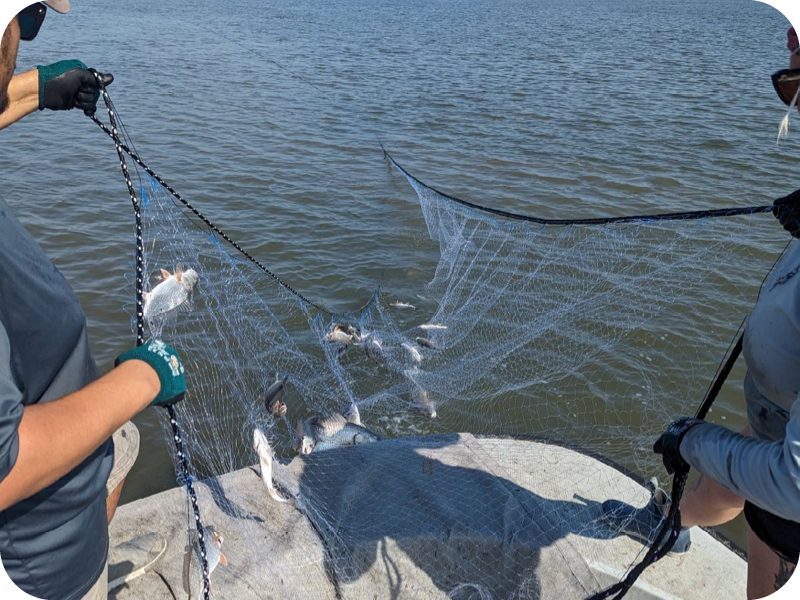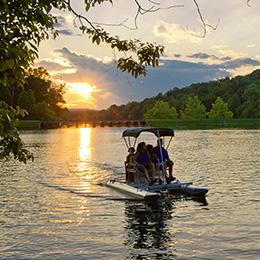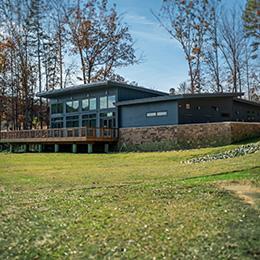 The dynamics of fish populations change over time due to environmental and ecosystem effects, interactions among multiple species, and effects of humans through harvesting, pollution, and habitat disruption. Thus the Marine Fisheries Section of Coastal Resources Division must conduct fishery surveys to collect data necessary for state fishery managers and policy makers to base management decisions.
The dynamics of fish populations change over time due to environmental and ecosystem effects, interactions among multiple species, and effects of humans through harvesting, pollution, and habitat disruption. Thus the Marine Fisheries Section of Coastal Resources Division must conduct fishery surveys to collect data necessary for state fishery managers and policy makers to base management decisions.
The Marine Sportfish Population Health Survey (MSPHS) is a fishery survey in which gillnets and trammel nets are utilized to collect timely and relevant data on the age structure, abundance, and habitat preferences of selected inshore and nearshore marine finfish species that are popular with recreational anglers. Since its start in 2003, data collected are used to create long term uninterrupted indexes of abundance, monitor trends in populations and determine the efficacy of current management practices The primary objective of this survey is to gather data on Spotted Seatrout (Cynoscion nebulosus) and Red Drum (Sciaenops ocellatus), the first and second most frequently targeted sportfish in coastal Georgia. All finfish, rays, skates, and sharks collected during sampling are identified and measured. These data are made available for regional and coast-wide stock assessments. To date, nearly 80,000 finfish representing more than 100 species have been sampled.
YOY Red Drum Survey
Gillnetting occurs June through August each year targeting young-of-year (YOY) Red Drum in the Altamaha River estuary, St. Andrew Sound, and Wassaw Sound. Thirty-six random sites are selected from a pool each month from each estuary. Selected sites are sampled using a 300ft gillnet with a stretched mesh of 2.5in. Size cutoffs are used to determine the relative abundance YOY Red Drum. All fish captured in the gillnet are measured and released. All Red Drum captured are measured, tagged, and released. Hydrological and environmental data are collected at each site.
Fall Trammel Net Survey
Trammel netting occurs September through November each year in the Altamaha River estuary, St. Andrew Sound, and Wassaw Sound targeting various estuarine sportfish with an emphasis on Spotted Seatrout. Twenty-five random sites are selected from a pool each month from each estuary. Selected sites are sampled using a 300ft trammel net (inner panel mesh 2.75in stretched; two outer panels 14in stretched). Hydrologic and environmental data are collected at each site. Data are used to determine relative abundance of Spotted Seatrout and other important recreationally valuable sportfish.
Questions?
Contact Marine Biologist Ryan Harrell at ryan.harrell@dnr.ga.gov or by calling (912) 264-7218.















